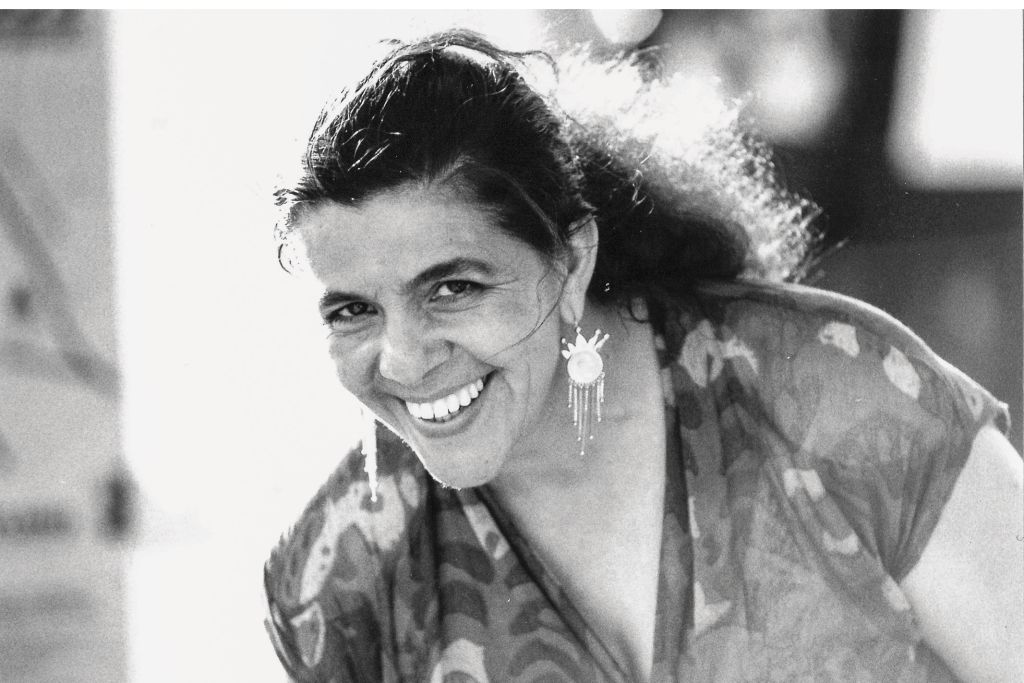Songs by Ruža Nikolić-Lakatos (1945–2022), Presented Live and Digitally
The songs of the Lovara represent a special form of musical expression among the many different Roma musical traditions. They tell of Roma life and of love, suffering, and important events, hence serving as a store of knowledge. 2011 saw the Songs of the Lovara inscribed on UNESCO’s List of Intangible Cultural Heritage in Austria in response to an application by Ruža Nikolić-Lakatos, an exceptional Lovara singer who was born in Hungary and fled to Austria in 1956. She settled in Vienna, where she met her husband Mišo Nikolić. In connection with the movement for the political emancipation of Austria’s Romni and Romnja, who suffered persecution and murder at the hands of the National Socialists and only began establishing their first formal association here in 1989, Ruža became an “ambassador of Roma culture” through her music.

For three decades, Ruža Nikolić-Lakatos maintained a close connection with the mdw’s Department of Folk Music Research and Ethnomusicology. She was one of the most important research partners in the department’s projects on Roma music in Austria and performed at numerous departmental events. This mode of collaboration came to an end with her death on 4 May 2022.
One approach to engaging with Ruža’s musical legacy is enabling her songs to live on through their performance by other musicians. An example of such performance was the concert evening Sa tja patjivake, Ruža [In Your Honour, Ruža] on 3 May 2024. Ursula Hemetek, who curated this event, had asked personalities from Austria’s Roma music scene for their creative takes on Ruža’s songs. The resulting concert began with the group Ruža’s Kids, a family ensemble formed specifically for the occasion by Ruža’s children Manuela and Mischa as well as her granddaughter Shireen. Stylistically, the three picked up where Ruža left off—though the voice of Shireen Nikolić, a formally trained musical theatre performer, lent their chosen songs a new and intriguing flair.

Next came Moša Šišić & Family. Moša had performed together with Ruža several times despite how the two were active in different areas of Roma music, and it was in the style of Serbian Roma music that Moša did honour to Ruža. Ferry Janoska’s innovative arrangements of Ruža’s songs for classical string quartet, bandoneon, and voice, performed by Melinda Stoika, Ferry Janoska & Friends, formed the programme’s wonderful conclusion. Altogether, this evening was a congenial act of homage to the deceased singer and a clear sign that Ruža’s songs remain very much alive.

This concert also served to officially launch the online exhibition Ružake gila of the MMRC – Music and Minorities Research Center (Project team: Ursula Hemetek, Eva Leick, Malik Sharif).This website is devoted to Ruža Nikolić-Lakatos’s musical legacy and provides her songs with a platform conceived to facilitate intensive public engagement. For the exhibition’s initial phase, 25 songs were selected. Each is presented together with a musical transcription, lyrics both in Romanes and in German translation, and explanatory remarks.
Particularly notable here are the selected impressions of the field research conducted by the ethnomusicologist Ursula Hemetek together with the singer Ruža Nikolić-Lakatos. In numerous audio recordings, one hears the two women speak about various songs’ content, special features, emotional significance, and backstories. In addition to the substantive value they provide, these excerpts also embody remarkable contemporary witnesses to collaborative research work.

Alongside numerous recordings from the research pursued by Ursula Hemetek, totalling over a hundred hours of audio material and archived at the Department of Folk Music Research and Ethnomusicology, Ružake gila also contains song recordings from the Heinschink Collection. This collection was compiled by Mozes F. Heinschink starting as early as the 1960s and is archived at the Phonogrammarchiv of the Austrian Academy of Sciences.
In addition to its 25 songs, the online exhibition Ružake gila explains the broader context of Lovara songs with their specific performance practices and historical development in light of the example of Ruža Nikolić-Lakatos. Significant here are the insights of those close to the singer—above all her daughter, Manuela Nikolić—and of experts such as Maria Walcher (formerly of the Austrian Commission for UNESCO) and Mozes F. Heinschink (an expert on the Romanes language), which are conveyed in both video and audio interviews.
Ružake gila is one of the mdw’s first digital exhibitions. It functions as an example of how digital humanities tools can be used to present music and music-related content to the public. At the same time, it keeps the songs of Ruža Nikolić-Lakatos alive and aids in their transmission—as a source for musicians, like on 3 May, but also as a contribution to the improvement of Roma music’s visibility and accessibility in Austria.
Further Information

